English | Español
Calves Get Stressed Too: What Dairy Farmers Need to Know
Introduction
Stress at Birth: The First Challenge in a Calf’s Life
Weather Woes: How Climate Extremes Impact calves
On the Move: Transportation Stress in calves
Management Matters: The Role of Human Practices in Animal Stress
Home Sweet Home? Housing Conditions and Animal Stress
Conclusions

Introduction
Just like us, calves can experience stress from various factors in their early lives. Understanding these stressors is key for dairy farmers to keep their calves healthy and growing strong. Recent information sheds light on critical periods and factors that can significantly impact these animals from birth through weaning. In this article, we will discuss the principal stressors in a calf’s life and their effect on its development and health.
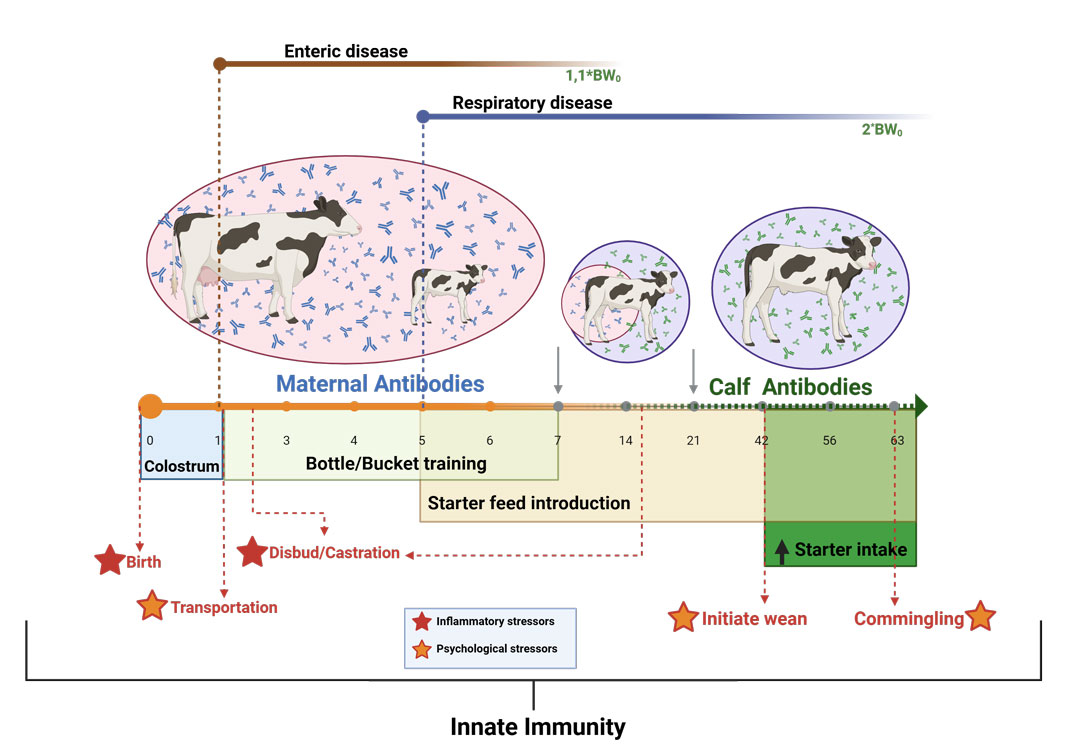
This graph is a timeline, spanning 0 to 63 days (approximately 9 weeks), designed to illustrate the dynamic interplay between a dairy calf’s immune development, its susceptibility to common diseases, and the influence of critical early-life events and management practices.
Stress at Birth: The First Challenge in a Calf’s Life
One of the first significant stressors for a calf is birth. While they’re still inside the cow, things are constant. However, coming into the world marks a significant change. Calves must receive colostrum within 2 hours after birth to gain passive transfer of maternal antibodies. This essential feed provides them with critical protection against detrimental bacteria until their immune system and antioxidative defense mechanisms mature. Research indicates that more than 40 percent of heifer calves fail to achieve sufficient passive transfer. Stressful events like hard calving or dystocia can add up to the failure of passive transfer even more. More information visit https://livestock.extension.wisc.edu/articles/feeding-the-newborn-calf

Weather Woes: How Climate Extremes Impact calves
Temperature plays a significant role in calf health. Calves expend considerable energy regulating their body temperature, particularly when outside their comfort zone, which ranges from 50 to 77 degrees Fahrenheit (10 to 25 degrees Celsius). In summer, they use extra energy to cool down, a process hindered by humidity and intensified by direct sunlight. While wind and a dry coat can aid cooling, these are less effective in humid conditions. Conversely, during winter, when temperatures drop below their lower critical point, calves must expend energy to maintain basic functions and body heat. Smaller calves lose heat more quickly due to their greater surface area relative to their weight. A clean, dry hair coat provides crucial insulation, while drafts exacerbate heat loss.
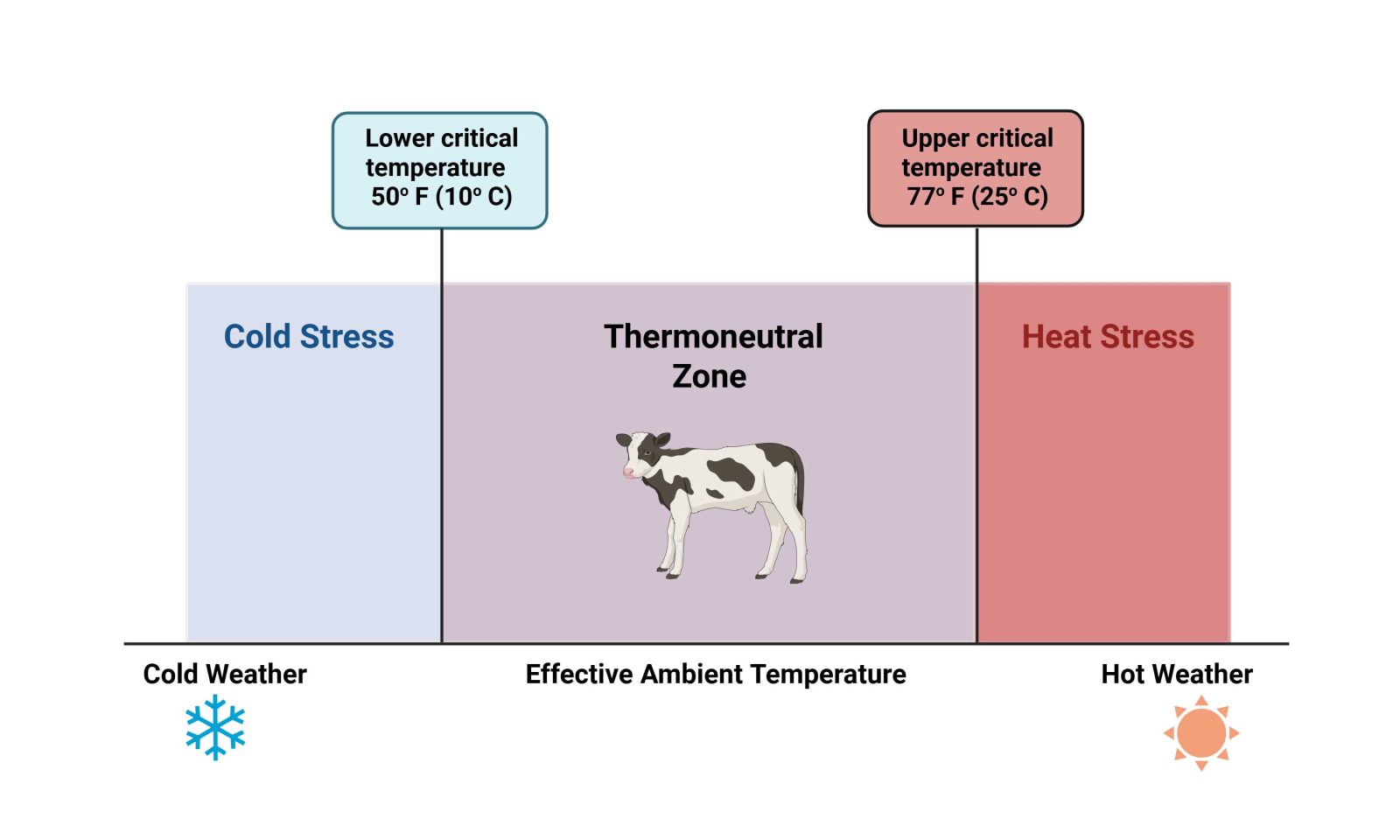
Calves under 3 weeks of age begin to experience cold stress below 50°F. A jacket helps reduce the energy they need to stay warm. Sunlight and the heat produced during rumination can help raise body temperature in cold conditions. If calves don’t receive enough energy in their feed to meet these increased demands, they will lose weight, their immune system will be depressed, and more susceptible to illness.

On the Move: Transportation Stress in calves
Transportation of calves soon after birth is a common practice that challenges calves’ well-being. This early movement, especially within the first 24 hours, adds to the stress of birth with potential limited nutrition, extreme temperature, dehydration, and exposure to pathogen. Those conditions can compromise their developing immune system and increase susceptibility to diseases like diarrhea and respiratory infections. For replacement heifers, these early health setbacks can lead to impaired growth and reduced future milk production. Preweaned average daily gain (ADG) affects future milk production. Research has shown that for every one pound of preweaned ADG, first lactation milk production increases by over 1,500 pounds. At the same time, beef calves are often associated with poorer carcass quality and lower market value.
To mitigate these risks and improve outcomes, here are some recommendations:
- Delay transportation for 24-48 hours after birth to allow for colostrum absorption
- Implement preconditioning protocols focusing on immune support and hydration
- Evaluate calf fitness for travel using standardized checklists
- Ensure comfortable transport conditions with proper bedding and environmental protection
- Minimizing transport duration and handling events through direct shipment is strongly recommended.
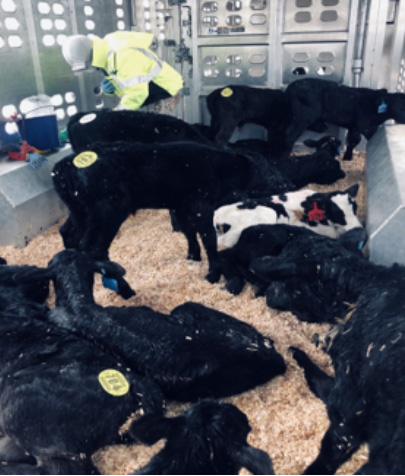
Management Matters: The Role of Human Practices in Animal Stress
Farmers commonly perform routine management practices like dehorning (removing attached horns) and disbudding (preventing horn attachment) on calves, typically between 2 days and 3-4 weeks of age. While these procedures reduce the risk of injuries to the animals, other animals, and caretakers, scientific evidence indicates they cause pain regardless of the method. Importantly, this timing often coincides with a natural decline in the protective maternal antibodies the calf received from colostrum, making them more susceptible to the inflammatory stress caused by dehorning or disbudding. Thus, providing local anesthesia and systemic pain relief is crucial to minimizing discomfort and improving animal welfare during both procedures, even when using caustic paste on very young calves.
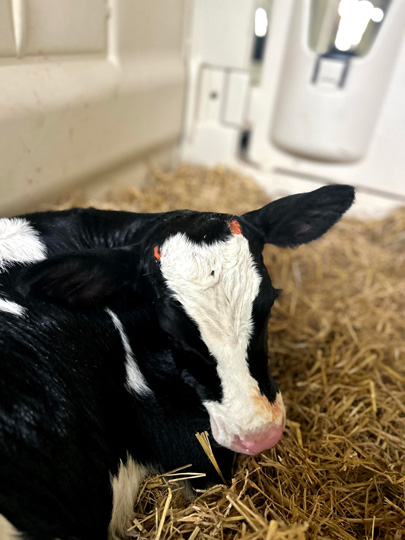
Home Sweet Home? Housing Conditions and Animal Stress
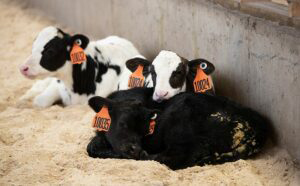
Finally, how calves are housed can be a psychological stressor. After they are weaned, calves in individual housing are often grouped together. This period of social adjustment has been linked to an increased risk of respiratory disease, a leading cause of illness and death in post-weaned calves. Individual housing systems are commonly used in the United States to reduce the risk of pathogen exposure and provide individual feeding and healthcare. However, health, growth, and social implications may be present for calves in alternative systems with greater space allowance than conventional systems or group housing. Dairy farms that house calves with at least one companion have shown an improvement in animal welfare and calf growth.
For more information visit https://animalwelfare.cals.wisc.edu/calf_pairing
Conclusions
Understanding these multifaceted stressors is crucial for implementing research-based management strategies that prioritize calf well-being, support robust immune systems, and optimize growth and development in young dairy animals. Promoting gentle handling procedures when working with calves is essential. During the pre-weaned period, calm and gentle contact with them can reduce physical stress, help avoid psychological stress and prevent chronic stress that could suppress the immune system. Further research and proactive management practices are necessary to mitigate these challenges and ensure the long-term health and productivity of dairy herds. For more information on calf care and reducing stress, visit https://dairy.extension.wisc.edu
Authors
Alison Pfau
Bilingual Regional Dairy Educator – Dane, Jefferson, Rock and Walworth counties. Her educational programming focuses on animal welfare, cow/calf care, training programs for bilingual workforce, and climate change.

Aerica Bjurstrom
Regional Dairy Educator – Aerica’s work focuses on herd health and animal welfare. She also has a strong background in meat quality and has done programming in market cow carcass quality.
References
- Hoseyni, F., Mahjoubi, E., Zahmatkesh, D., & Yazdi, M. H. (2016). Effects of dam parity and pre-weaning average daily gain of Holstein calves on future milk production. Journal of Dairy Research, 83(4), 453–455. https://doi.org/10.1017/S0022029916000558
- Jones, C., and J. Heinrichs. “Early weaning strategies. Department of Dairy and Animal Science, The Pennsylvania State University Extension Report.” 2007.
- Calf Care & Quality Assurance – version 1 https://www.calfcareqa.org/
- Hulbert, Lindsey E., and Sonia J. Moisá. “Stress, immunity, and the management of calves1.” J. Dairy Sci 99 (2016): 1-18.
- NAHMS (National Animal Health Monitoring System). 2007. Dairy 2007: Heifer calf health and management practices on U.S. dairy operations. USDA:APHIS:VS. USDA, Ft. Collins, CO. Accessed Nov.192015. https://www.aphis.usda.gov/animal_health/nahms/dairy/downloads/dairy07/Dairy07_ir_CalfHealth.pdf
- https://animalwelfare.cals.wisc.edu/calf_pairing/



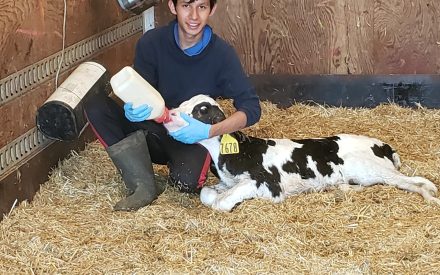 Colostrum is critical after calving
Colostrum is critical after calving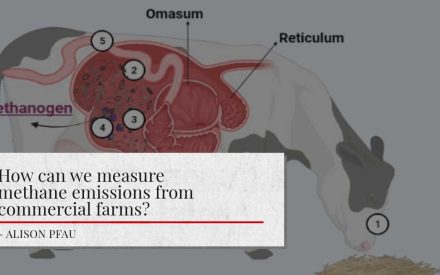 How can we measure methane emissions from commercial farms?
How can we measure methane emissions from commercial farms?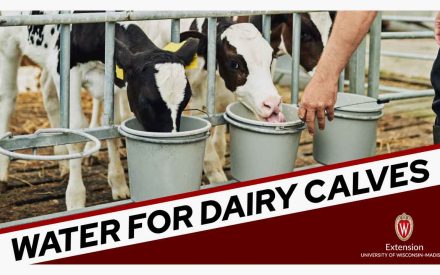 The importance of water for dairy calves
The importance of water for dairy calves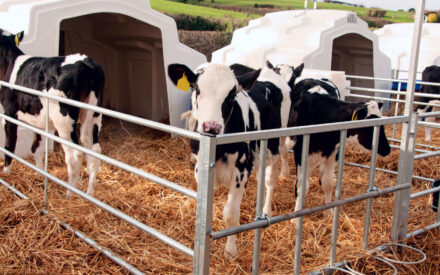 Water: A critical and undervalued nutrient in dairy calves
Water: A critical and undervalued nutrient in dairy calves


